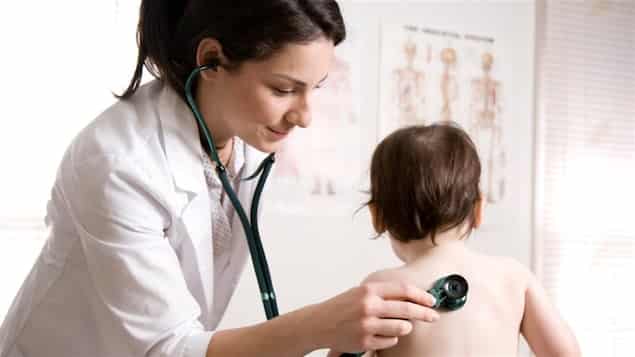The scientific community estimates that 10% to 20% of infected adults have symptoms for more than two months after infection with SARS-CoV-2, which can lead to a diagnosis of post-COVID-19 syndrome.
According to the definition of the World Health Organization (WHO), this syndrome can appear regardless of the initial severity of the infection and even after an initial recovery.
Until now, however, it had been little studied in children. This is why researchers from Denmark wanted to better estimate the prevalence of long-lasting symptoms in children and infants, as well as their impact on their quality of life.
The researchers analyzed the questionnaires completed by the parents of some 11,000 children aged 0 to 14 who tested positive between January 2020 and July 2021 as well as those of 33,000 children who had not been (i.e. say the control group).
Their results were published today in The Lancet Child & Adolescent Health. (New window)
Study participants were asked about the most common symptoms of COVID long
: gastric problems, headaches, fatigue, muscular and arthritic pain, dizziness, nausea, loss of appetite, palpitations, difficulty concentrating, breathing problems, etc.
The researchers noticed that the infected children showed more symptoms than those in the control group, a sign that “long COVID” is present in young people.
In 0 to 3 year olds, 40% of infected children showed some of these symptoms for two months, compared to 27% of the 33,000 children in the control group. In children aged 4 to 11, 38% of infected children had long-term symptoms, compared to 34% for the control group. In infected children aged 12 to 14, this rate was 46%, compared to 41% for the control group.
The most frequently reported long-lasting symptoms after two months in infected children aged 0-3 years were mood swings (10%), cough (6%), rash (4%) and loss of appetite (4%).
In infected 4 to 11-year-olds, there were mood swings (10%), fatigue (4%), memory or concentration problems (3.5%) and stomach aches (3%).
Among infected 12 to 14 year olds, mood swings (5%), fatigue (4%), memory or concentration problems (4%) and stomach aches (3%) were the most commonly observed symptoms.
The proportion of infected young people with persistent symptoms seems to decrease over time. For example, if more than 6% of infected children aged 0 to 3 had a cough after two months, 4.4% had it after six months.
At least one-third of children who were infected and had long-term symptoms did not have these symptoms before SARS-CoV-2 infection.
Among infected children, less than 5% reported having severe symptoms when first infected and more than half reported no symptoms.
” Our results align with previous studies on “long COVID” in adolescents, which show that while the risk of children having long-term symptoms is low, this disease should be recognized and treated seriously. »
Moreover, among children of school or daycare age, 28% of infected young people missed at least 16 days of school, compared to 18% for the control group.
The researchers point out that in some cases, it is possible that the symptoms observed in infected children may not be associated with the COVID long
.
The authors also note that it is possible that some children in the control group were in fact infected but either never received a test or were asymptomatic.
It should also be noted that this study includes infections before the Omicron wave. Thus, it is difficult to say whether the COVID long
is more or less prevalent in the case of this new variant.
Understand to act better
Researcher Maren Rytter, from the University of Copenhagen, Denmark – who was not involved in the study – nevertheless concludes that the impact of COVID long
on children is rather limited.
[Bien que] the study found that symptoms of any kind were slightly more common in children who had been infected with SARS-CoV-2 […]the overall impact on children of a COVID-19 infection is likely small and likely far less than the impact of the indirect effects of the pandemic.
For Simon Décary, a researcher at the Laboratory for Research on Patient-Oriented Rehabilitation at the University of Sherbrooke, who studies the post-COVID-19 syndrome, this study however confirms the hypothesis that there are forms of COVID long
in children but is less common than in adults.
Understanding the prevalence of COVID long
in children is essential to guide clinical diagnosis, care and decisions regarding isolation, containment, non-pharmaceutical interventions and vaccination strategies
writes Professor Selina Kikkenborg Berg, the lead author of the study.
She adds that doctors don’t always associate these symptoms with COVID-19, which makes diagnosis difficult.
Mr. Décary adds that the authorities must find ways to help these young people who have episodic disabilities
. According to him, a safety net is needed to help those who have more symptoms in the long term.
” You have to think about the wider impacts. For example, if the child is unable to concentrate for two months because of these symptoms, how do we manage this with the school? »
He wishes to point out that other studies have shown that the risk of long-term sequelae does not decrease in the case of reinfections. It’s a reality that’s here for good
he warns.
Reference-ici.radio-canada.ca
